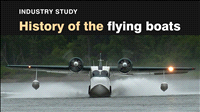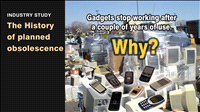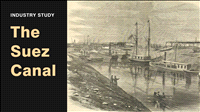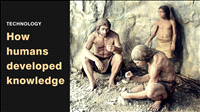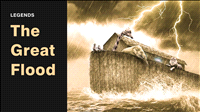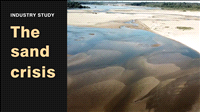How humans developed knowledge | Human evolution
By Kiron Kasbekar | 24 Nov 2022
I am going to talk about how the seeds of the amazing volume of knowledge we have today were sown during the prehistory of humankind.
You can think of it as Business Prehistory – because there was an element of business involved – as in producing things, and in what must have been some very elementary kinds of barter.
I say ‘very elementary’ because there was not much available for trading. It was what is called a subsistence economy. A subsistence economy is an economy that just about takes care of the provision of food, clothing, and shelter of the producers rather than cater to the market.
The prehistoric economy must have operated at a very low level of subsistence, that is, at just about the survival level – at a level between survival and starvation death.
Why do I say that? I say it because we know that primitive humans migrated long distances in search of food and water, settling down when they could find sources of food and water, and moving on when the land around them could not yield enough food or when the water sources dried up. These migrations continued for thousands of years.
This was also the time when technologies, however primitive they might have been, began to be developed. People were learning things about the environment around them. They were learning how to harness parts of the environment to meet their daily needs.
Among the first things they did was make tools from sticks and stones and bones. And they used these tools to do other things, or even make other things. So stones were used to sharpen other stones into sharp blades, and branches would be trimmed and shaped to convert them into clubs.
These tools and weapons gave humans, otherwise among the weakest of animals their size, an edge over other animals much bigger and more powerful than them.
People had not yet learned farming, and the grains they ate were grains they collected from the grasses they found around them. They saw the benefit of gathering the grain and storing it for consumption afterwards. But the planting of seeds was an idea that did not occur to them automatically.
And even much later, when people learned to plant grains and harvest them, their methods and implements were so primitive that they could barely survive on what they produced. Also, the land would often become less and less fertile as they harvested grain from it year after year.
They did not have the basic implements even the poorest farmers of use today, because they had not yet learned to make iron to make ploughs and other implements, they did not know about fertilizers and had no way in which to deal with insects and pests that sometimes consumed and spoiled the crop.
Even today we see locust swarms laying waste to large tracts of crops in East Africa, the Arabian Peninsula, and the Indian subcontinent. And this is when farmers use pesticides – for the locust swarms travel hundreds of miles and swoop on farms before the farmers can get ready to deal with them.
Without today’s means to predict the arrival of locust swarms and without the means to deal with them, the prehistoric farmers would have been helpless in dealing with such flying pests or any other creatures that consume grains growing in fields.
So things were extremely difficult those days. But it was also a time when humans slowly but very clearly differentiated themselves from the rest of the animal world by creating tools, by harnessing fire, and by learning to communicate with one another through symbols, words and language.
They first communicated only through sign language (which is more a basic form of communication than a language) – and over the years that developed through primitive kinds of vocalized signals into dialects.
Obviously the initial vocabulary would have centered on actions or feelings such as eating, or being happy or being afraid, or disliking or rejecting something, with hand and facial actions and deliberately uttered sounds.
Soon enough such sounds would have come to acquire common meaning within small groups, and then across somewhat bigger groups, and the collection of sounds would have grown with time. And, as the sounds became more complex, they became words, and together the words and sounds became the vocabulary of language, and common ways of forming sentences were found.
What is interesting is that people were not satisfied with communicating with others in their vicinity or time. They also wanted to keep a record of their times for future generations to see – either because of a creative drive or because of some primitive archival instinct. So prehistoric people created records of a kind by painting or carving images on cave walls.
Unfortunately, the records were lost in unexplored caves or buried under later construction sites or heaps of rubble that did not get excavated until a century and a half ago.
For a long, long time, next to nothing was known about these prehistoric times. So the origin of the human race was left to be determined by all kinds of speculation and usually very wild imagination, mostly involving supernatural beings with extraordinary powers.
But in the past two centuries more and more knowledge has been gained about how our ancestors evolved – especially after the pioneering work of people like Charles Darwin and a long line of anthropologists whose meticulous efforts have revealed the secrets of those early prehistoric days with increasing clarity.
Incidentally, Darwin is described as a ‘naturalist, geologist, and biologist’. You’d rarely find descriptions like that today, but in Darwin’s times, scientific knowledge was limited and it was possible to specialize in several things at the same time.
Darwin’s book, On the Origin of Species, was published on 24 November 1859. It introduced the idea of speciation, i.e., the formation of new and distinct species, in the course of evolution, and of ‘natural selection’. In later editions of the book, Darwin wrote about the survival of the fittest.
The approach to evolution, of pioneers like Darwin, was so startling to the rulers of their times that they banned their books. But, as more and more evidence piled up to support their writing, the bans were lifted.
Darwin’s book was first banned in 1859 by the library of Trinity College, in Cambridge, in Britain, where Darwin had been a student.
Much later, in 1925, the American state of Tennessee banned the teaching of the theory of evolution in schools; that law was enforced right until 1967! The book was banned in Yugoslavia in 1935 and in Greece in 1937.
One reason why the book was banned was that it went against the dogma of the church, which was that God created man with a kind of wave of his hand, and then created woman with another gesture the next day so the man would have some company.
Today, even sections in the top echelons of the Catholic Church admit that evolution did happen. And, as a result, the concept of God too has gone through some amount of evolution, or you might like to think of it as a kind of metamorphosis.
The believers have now given up the notion of a god living somewhere in the clouds above the earth or on a mountain top, and gone back to a very early concept of god, which was very abstract, and almost agnostic, as spelt out in the Nasadiya Sukta, the hymn of creation in the Rig Veda.
Considering that the Rig Veda was written around 4,000 years ago, the verse shows amazing clarity and vision. It says:
There was neither non-existence nor existence then;
Neither the realm of space, nor the sky which is beyond;
What stirred? Where? In whose protection?
There was neither death nor immortality then;
No distinguishing sign of night nor of day;
That One breathed, windless, by its own impulse;
Other than that there was nothing beyond.
Darkness there was at first, by darkness hidden;
Without distinctive marks, this all was water;
That which, becoming, by the void was covered;
That One by force of heat came into being;
Who really knows? Who will here proclaim it?
Whence was it produced? Whence is this creation?
Gods came afterwards, with the creation of this universe.
Who then knows whence it has arisen?
Whether God's will created it, or whether He was mute;
Perhaps it formed itself, or perhaps it did not;
Only He who is its overseer in highest heaven knows,
Only He knows, or perhaps even He does not know.
This was centuries before the notion of a pantheon of gods and goddesses, a kind of alliance or confederation of gods and goddesses came to dominate the common belief system in many regions.
Significantly today, with the growth of scientific knowledge, a large number of people in Europe, for example, have altogether stopped believing in any god.
The ideas of the evolutionists I have just referred to (such as Darwin) are merely the trigger for this presentation. I am not going to talk about evolution here, in this video or in the parts that will come after it. I am going to talk about what followed evolution.
My presentation begins with the time humans descended from the trees, as the progeny of some species of apes that existed some 3 million years ago – and then embarked on a very long journey from its roots in eastern Africa to other parts of that continent, and then to the rest of the world. A journey that took nearly two hundred thousand years!
We know today that life on earth was first born in the seas, and after millions of years, some fish, which had begun to crawl out of the water, and had begun to adapt to the non-aquatic environment over generations, had evolved into land animals.
Animals roamed the earth during the Triassic Period (252 to 201 million years ago). This was the time when all continents were part of a single land mass called Pangaea. The differences between animals or plants found in different areas were minor. The climate was hot and dry, and there were no polar ice caps. It was in these conditions that dinosaurs first evolved.
Toward the end of the Triassic Period, there were many big earthquakes and volcanic eruptions, and these resulted in Pangaea slowly breaking into two. This resulted in the North Atlantic Ocean.
Then came the Jurassic Period (201 to 145 million years ago). Towards the end of the Triassic Period there was a mass extinction of animals, and very few of the animals of that time survived. While many large land animals were wiped out, dinosaurs survived. Over the centuries they evolved into a wide variety of species and their numbers multiplied as dense vegetation grew in this period, providing plenty of food for plant-eating dinosaurs. Some of this vegetation became the fossil fuels that we extract and use today.
By this time, Pangaea had split into two, creating Laurasia in the north and Gondwana in the south. However, similarities in fossil records indicate that the two continents had not separated completely, and some land connections still existed between the two continents in the early Jurassic period.
The plentiful plant supply allowed the huge plant-eating dinosaurs, such as diplodocus and brachiosaurus to evolve and thrive. These were some of the largest animals to have lived on our planet.
During the Cretaceous Period (145 to 66 million years ago) the land separated further into some of the continents we have today, although their positions were very different from today’s positions. As a result, later dinosaurs evolved independently in different parts of the world, becoming more diverse than they had been earlier.
Over the Cretaceous period other animals evolved, including snakes for the first time, and so did various insect groups, including bees. The first flowering plants appeared too, and they proliferated, helped by bees and other insects. During this period mammals evolved, including tree dwellers and ground dwellers.
Humans diverged from apes (from chimpanzees) more than 6.5 million years ago. And over the next few million years the prehistoric humans evolved further.
They began to be able to stand and walk more erect, they began to use their hands to make the most basic of stone and wood tools. And some of these hominids began to scavenge and eat meat.
Still, it was a story of weak humans at the mercy of nature.
- Life was very tough! Early humans were under daily threat from ferocious wild animals and hostile human enemies.
- They had limited means with which to defend themselves – mainly sticks and stones, and bones, and their wits. They didn’t have powerful, sharp teeth, nor deadly claws, as many carnivorous animals did, to tear up their enemies. The tools some of them could make were useful for defense – but not always.
- And there were other threats – natural calamities like storms, floods, dry spells, droughts and famine, which meant a shortage of plant food – fruits, roots, shoots … But they survived, unlike their earlier humanoid ancestors.
- Despite all the adversities and disasters that they faced, many of our prehistoric ancestors managed to survive. They learned new things with each generation. And they slowly but surely improved their ability to deal with nature.
- About 200,000 years ago, they began spreading from Eastern Africa to other parts of the continent – some tribes going southward and some westward.
- After having roamed the jungles and grasslands of Africa, sections of our ancestors moved out of that continent, traveling north and then east, in search of food and shelter.
- Then sometime between 70,000 and 60,000 years ago, our prehistoric ancestors began migrating out of Africa. They moved from what is known today as the Bab-el-Mandeb Strait to where Yemen is today on the Arabian Peninsula.
- When they moved out of Africa, they didn’t know where they were going, what they would find, whether they would survive or not.
- Then, after moving through the Arabian Peninsula, most of them settled down in the Middle East between what we know today as Iraq, Turkey and Iran for a long period. Then many of them began to move out, traveling east towards the Indian subcontinent, while some of them moved north-west into Europe.
- Now this was well after some other humanoids had moved out of Africa and traveled northwards into Europe, and settled there. These were the Neanderthals, an extinct species or subspecies of archaic humans who lived in Eurasia until about 40,000 years ago.
- For reasons that are not clear, whether it was their inability to survive in the extreme cold weather of those times, or lack of food, or clashes with the ancestors of humans, that species died out completely. Our human ancestors had learned to stitch animals skins with bone needles and gut so they could fashion basic warm clothes for themselves, and survive the cold while the Neanderthals could not
- Anyway, from around 45,000 years ago to 10,000-15,000 years ago – humans migrated through China, Mongolia, Siberia, North America, Central America, and South America right up to the southern tip of that continent in Tierra del Fuego.
- It took humankind nearly 60,000 years to complete a journey of around 22,000 miles (over 35,400 km), or nearly the equatorial circumference of the Earth (24,901 miles, or 40,075 km).
- Why did it take such a long time?
- It was because traveling was not easy. Forget having ships or aeroplanes, humans had not even invented the wheel yet. So they didn’t even have carts on which to load stuff or to give their tired legs a rest as they traveled.
- They had also not yet domesticated horses or cattle – so that option did not exist either.
- I must stress one thing here. The migrations would usually have happened in a stop-go-stop fashion. Whenever they came to a place where there was enough food and water and no opposition from previous settlers, a migrating tribe would halt their journey, and settle down for as long as the food and water lasted.
- When food or water began to become scarce, or if they were pushed out by some other tribe, they would move further to a new location that had enough food and water and they could live in peace.
- We must recognize that on this long journey, and especially while they settled in a place, humans were involved with significant economic activity.
- Primitive it might have been, but it was economic activity – from picking fruits and making tools and weapons to hunting animals for food, harvesting whatever wild food grains they could find where they settled, and storing them, cooking grains and meat on a fire, building primitive dwellings, and so on.
- Now there are some differences of opinion about how prehistoric people traveled to Australia. There is one group of people who believe that they build boats to navigate the distance between Indonesia and Australia. There are others who believe there were land bridges between the Asian continent and the Australian landmass when the Ice Age was coming to an end. Australia was much closer to Indonesia than it is today. And think about this.
- The latest Ice Age which began about 2.6 million years ago, was beginning to end, but ended only much later, about 11,700 years ago.
- Now, because there was still a very great amount of ice that had not melted to form rivers and descend to the seas, there were large areas where we have seas today where the water had receded and there the seabed had been exposed up to depths of 400 feet or more compared to what we see today.
- So, walking from one major landmass to another over that surface would have been like climbing down and then up low hillsides. So our ancestors could trudge across the ice sheets from Asia to Australia.
- Way up north too, the continents were configured differently from how they are today. See the map. And then see this extract from a US Geological Survey website. It says:
- ‘During the last Ice Age, sea levels were lower, which allowed humans to cross over to North America from Asia at the (now underwater) Bering Strait.
- ‘During colder climatic periods more ice caps and glaciers form, and enough of the global water supply accumulates as ice to lessen the amounts in other parts of the water cycle … During the last ice age glaciers covered almost one-third of Earth's land mass, with the result being that the oceans were about 400 feet (122 meters) lower than today.’
- What applied to the Bering Strait should have applied to the expanse between Indonesia and Australia. So, rather than travel by boat over uncharted seas, primitive humans are likely to have walked across solid land that lay where there are seas today.
- And, to remind you all about what I referred to earlier, while some humans migrated southward towards Australia, others migrated through China, Mongolia, Siberia, North America, Central America, and South America right up to the southern tip of that continent in Tierra del Fuego.
- Now, as I said earlier, it took humankind nearly 60,000 years to complete this journey of around 22,000 miles which began in the jungles of Africa. Sure, it happened over thousands of years. But the very thought of people trudging 22,000 miles is tiring. I need a break. And I am sure you’d like a break too before we go the next stuff, which includes:
- The tools prehistoric humans fashioned and used
- Agriculture
- Clothing
- Ruling class
- Religion
That brings us to the end of Part 1 of this series on How humans developed knowledge
I hope you liked this part of my series on how primitive humans developed knowledge. Watch out for the next episodes of this series, which will be on the origins of clothing, the origins of a ruling class, the development of writing, the development of religions, and then the rapid advance of science and technology, and industry in the last few centuries.
So do visit us again. And tell your friends and colleagues too!
And, if you have not already subscribed to the Business History channel, please do so; for then you will be alerted every time we upload a new video here.
Do also visit our website, bh.domain-b.com to get a lot more content on business history, including lists of books, and book reviews, and a business history quiz.
From there you will also get access to a wide range of business news and content on Informachine, the web-based business intelligence and knowledge management system that finds, tracks, and downloads relevant news from the internet, saving you hours of grind and toil.
It’s free of cost!
The product links are given below in the description to the video.
Thank you for watching! And I hope to see you with our next video. Until then, goodbye!









